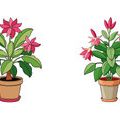1. Making the Most of Small Sheds
For many British allotment holders, shed space is at a premium. With plot restrictions and the popularity of compact sheds, it’s essential to use every inch wisely. Typical UK allotment sheds often range from 4×6 to 6×8 feet, making clever storage solutions a necessity rather than a luxury. Begin by assessing your shed’s layout and identifying under-utilised corners or wall areas. Prioritise vertical storage to free up valuable floor space—think about installing sturdy shelves, pegboards, and hanging racks for tools and supplies. Keep only the essentials inside and store larger or seasonal items at the back or in weatherproof boxes outside if permitted. Embrace multi-functional furniture such as fold-down tables or stackable crates that can double up as seating or extra surfaces. By planning your space with intention and sticking to the essentials, even the smallest British shed can become an organised and efficient hub for all your gardening needs.
2. Vertical Savvy: Going Up, Not Out
Maximising storage in a classic British allotment shed often means thinking upwards rather than outwards. Many UK sheds are compact, with limited floor space. That’s why making the most of vertical surfaces is a game-changer for keeping tools organised and walkways clear. From wall-mounted shelving to sturdy hooks and versatile pegboards, here are some clever ideas tailored for British sheds.
Wall-Mounted Shelving: Classic and Functional
Shelves attached high up on shed walls keep items like plant pots, seed trays, and small toolboxes tidy yet within reach. Opt for weather-resistant materials such as treated timber or galvanised brackets to withstand damp UK conditions. Adjustable shelving lets you reconfigure the layout as your gardening kit grows through the seasons.
Hooks & Hanging Systems: A Place for Every Tool
Sturdy hooks are perfect for hanging everything from spades to secateurs. Place heavy-duty hooks at mid-height for large tools, while smaller hooks higher up can hold hand trowels or gloves. Magnetic strips near your potting bench are brilliant for securing metal tools quickly after use.
Pegboards: Customisable & Space-Saving
Pegboards are incredibly versatile for British shed layouts. With easy-to-move pegs, you can reorganise as needed—ideal when your gardening priorities change with the weather! Mount a pegboard on an unused wall and add baskets or bins for seeds and twine.
Vertical Storage Solutions at a Glance
| Solution | Best For | UK Shed Tip |
|---|---|---|
| Shelving | Lightweight pots, trays, reference books | Install above head height to free up floor space |
| Hooks | Larger tools (spades, forks), watering cans | Use rubber-coated hooks to prevent rust marks |
| Pegboard | Hand tools, gloves, seed packets | Add labels for easy identification during busy planting season |
British Allotment Shed Tip:
If your shed walls are thin, reinforce them with plywood panels before adding heavy shelves or pegboards. This simple upgrade ensures lasting stability through rainy British winters.
![]()
3. Clever Container Solutions
Maximising shed space in British allotments often comes down to choosing the right containers. Stackable crates are a firm favourite, allowing gardeners to make use of vertical space while keeping tools, seeds, and accessories neatly separated. Many UK gardeners opt for sturdy wooden or recycled plastic crates that can be easily labelled and rearranged as needed.
Another practical solution is using labelled pots. These are perfect for sorting small items such as seeds, bulbs, and plant ties. Clear labelling ensures everything has its place, saving time rummaging during busy planting seasons. For a touch of personality and sustainability, many British gardeners upcycle everyday items—old biscuit tins, tea caddies, or even vintage sweet jars—to store odds and ends. These upcycled tins not only add character but also support the eco-friendly ethos so valued in local allotment communities.
By combining stackable crates, labelled pots, and creative upcycling, you can transform your shed into a beautifully organised space that reflects both practicality and British gardening charm.
4. Mud-Proof and Weather-Wise
British allotment sheds face everything from sudden showers to muddy boots, so keeping your space organised and dry is key. Smart storage solutions not only protect your gear but also make life easier when the weather turns typically British.
Storing Wellies and Waterproofs
Nothing says “allotment life” quite like a pair of mud-caked wellies by the door. Instead of letting them clutter your shed floor, consider these practical options:
| Storage Idea | Benefit | Best For |
|---|---|---|
| Raised Boot Racks | Keeps wellies off the ground to dry and avoid puddles | Muddy boots, children’s wellies |
| Wall-Mounted Pegs | Saves floor space and allows waterproofs to drip-dry | Coats, overalls, hats |
| Plastic Storage Tubs | Prevents mud from spreading; easy to clean | Garden shoes, gloves, wet gear |
Weatherproof Tool Storage
Battered by rain or damp air, tools can quickly rust or degrade if left unprotected. To keep them in tip-top condition:
- Use galvanised metal hooks or racks: Hang spades, forks and hand tools up for airflow and rust prevention.
- Add silica gel packs or dehumidifiers: Keep moisture down inside tool cupboards or drawers.
- Opt for lidded bins: Store smaller tools and hardware in waterproof containers to guard against leaks.
- Shelving with lip edges: Prevents water drips reaching stored items on rainy days.
Clever British Touches
A sturdy coir doormat at the entrance helps scrape off mud before you even step inside. Meanwhile, an old biscuit tin makes a nostalgic (and airtight) home for seed packets or twine – classic British thrift!
Quick Tip: Rotate Gear Seasonally
Swap out heavy coats for sun hats as the weather changes. Using labelled baskets or colour-coded pegs makes this quick and keeps your shed tidy year-round.
Allotment Essentials: Keeping Tools Tidy
Every British allotment shed needs a system for organising the basics—spades, forks, and twine. These trusty tools are used almost daily, so keeping them tidy and easy to access makes a real difference. Start by installing sturdy wall-mounted racks or hooks for your spades and forks. Position these at shoulder height to avoid bending and to keep sharp edges safely away from feet. For smaller tools like trowels and hand forks, use repurposed wooden crates or simple shelving with labelled baskets.
String and Twine Management
Twine is a must-have for tying up beans or marking out rows, but it often ends up tangled. Try using an old teapot or a recycled tin as a twine dispenser—simply feed the end through the spout or punch a hole in the lid. Alternatively, hang a pegboard with pegs dedicated to different types of string, so you can see what you have at a glance.
Vertical Space Solutions
Make the most of limited shed space by going vertical. Hang long-handled tools on the back of the door with heavy-duty hooks. Magnetic strips can hold metal tools securely along the walls, while stacking crates can store gloves, seed packets, and other small essentials without cluttering up valuable floor space.
Easy Clean-Up Routine
To keep everything in its place, establish a quick clean-up habit after every gardening session. Brush off soil from tools before hanging them up, and return twine to its dispenser. Not only does this save time in the long run, but it also extends the life of your essential kit—making your British allotment shed both efficient and inviting.
Protecting Precious Seeds and Supplies
Every British allotment holder knows that seeds, compost, and fertilisers are the lifeblood of a thriving garden. However, keeping these essentials safe from pests and moisture in a typical shed can be a challenge. Here are some practical storage tips tailored for UK gardeners.
Secure Storage Containers
Invest in airtight, rodent-proof containers for your seeds and fertilisers. Metal tins or thick plastic boxes with tight-fitting lids prevent mice and insects from getting in. Clearly label each container with the contents and date to make finding what you need quick and easy during busy planting seasons.
Pest-Proof Shelving
Install shelving units with raised legs or wall-mounted brackets to keep supplies off the shed floor. This not only deters pests but also helps prevent dampness from damaging your stock. Consider using mesh baskets for improved air circulation around bags of compost or bulbs.
Safe Compost Storage
Store compost in strong lidded bins, ideally kept outside the main shed if space allows. If inside, ensure bins are sealed tightly to avoid attracting slugs and other unwanted visitors. Use stackable designs to maximise your available space while maintaining easy access.
Chemical Safety
Always keep fertilisers and garden chemicals on high shelves or locked cabinets, out of reach of children and pets. In line with UK regulations, store them in original packaging with safety instructions visible. For extra precaution, use a separate section of your shed dedicated solely to chemicals.
Moisture Management
The British weather is famously unpredictable, so add silica gel packets or moisture absorbers to seed containers to keep them dry. Check regularly for condensation inside your shed and ventilate when possible—simple louvred vents can make a big difference.
By organising your shed with pest-proof, well-labelled storage solutions, you’ll protect your precious supplies year-round—ensuring every packet of seeds and scoop of compost is ready when you need it most on your allotment.


